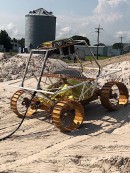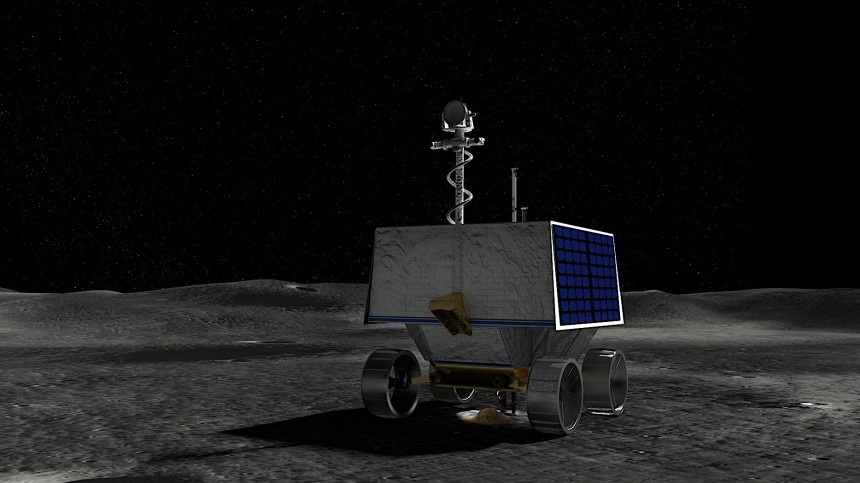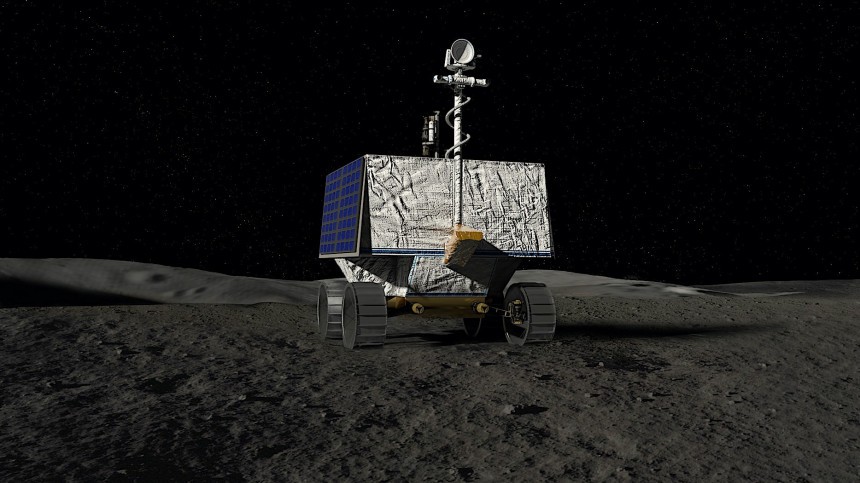The ongoing Artemis Moon exploration program is much better positioned than the Apollo program of the 1970s to achieve a lot more. That reality stems not only from NASA's determination to establish bases on the Moon, but also from the fairly advanced technologies going into the effort.
The decades that have passed since Apollo came with incredible advancements in technology, and they will all be put in the service of the new program to make sure this is just the beginning of humanity's expansion into the solar system. Including artificial intelligence.
The American space agency is on the verge of readying its first-ever Moon rover. That's right, despite being the single Earth-based organization to place humans on the Moon, NASA never landed an in-house developed robotic rover up there.
That's because the only one sent to the Moon so far, Apollo's Lunar Roving Vehicle (LRV), was controlled by humans and was the result of collaborative work between Boeing and General Motors.
This groundbreaking new machine is called VIPER, which is short for Volatiles Investigating Polar Exploration Rover. It is scheduled to depart our planet and reach the satellite at the end of next year, with a simple yet crucial mission in mind: find and map water.
Water is a crucial element for the success of future missions to the Moon, and knowing where it is will significantly cut the amount that needs to be transported from Earth for the needs of said missions.
The VIPER will land at the lunar south pole, the same place where the first Artemis astronauts will arrive later this decade, in a region called Mons Mouton. From that point on and for the next 100 days or so, the robotic rover will travel the wasteland looking for water ice wherever it can find it.
The rover itself is the size of a golf cart and weighs 992 pounds (450 kilograms) - that makes it, when it launches on board a SpaceX Falcon Heavy rocket, the heaviest cargo NASA has ever sent into space using a commercial partner.
Powered by a solar-charged battery with a peak power of 450 watts, it should be capable of driving like a normal rover, or even sideways and diagonally, in search of the objectives of its mission.
The rover packs three spectrometers to get a better sense of the terrain it's on, and a a 3.28-foot (1-meter) drill to dig into the surface once it finds something of interest. The collected samples will be analyzed and data on the distribution, physical state and composition of ice deposits should be accessible this way.
For it to be able to reach places of interest, though, it needs to know where it's going. Since we don't really have something akin to a road map for the Moon, the team controlling the rover will have to be very careful when choosing where to send it. And this is where an artificial intelligence system comes in.
NASA calls the AI SHERPA. In the normal world, that's a term used to describe a resident of the Himalayas who can navigate the tallest mountains in the world like it's your local mall. In NASA slang, it means System Health Enabled Real-time Planning Advisor.
The technology has been developed, along with others, as a means to make VIPER's travels easier and safer. It will not actually control the mission, but it will inform the team on crucial aspects of navigation in the dangerous environment.
SHERPA's main goal is to "help assess risk and optimize decision-making." Whenever the rover has to move from one location of interest to the next, or needs to stop and wait while not in direct communication with Earth, it will probably only do so after its controllers have consulted with SHERPA.
The tech is capable of informing the crew on the best course of action by making an "analysis of vast amounts of data" while also taking into account the Moon's dangerous terrain, the physical limitations of the rover itself, and the potential for discovery of the target location.
After all the numbers have been crunched in, SHERPA can come up with several options for the mission to be accomplished, which it will present to its human handlers.
Important to note is the following aspect about SHERPA revealed by NASA: by running thousands of mission simulations, the AI can "assess the various risks of different routes […] and even provide contingency branches for where to go if something changes or doesn't go according to plan."
The system is already in use over at NASA as mission planners make the final touches to the route the rover is expected to take once on location. SHERPA will however continue to serve the VIPER mission, including interactively, with the team planning to use the AI to "help map out various routes."
It will also be deployed to perform real-time problem-solving, especially when the rover is instructed to perform new scientific or operation work.
As a side note, NASA says that despite VIPER being its first robotic rover, the mission is not an autonomous one, and the AIs that will be fielded to help will not replace human input in the slightest.
The American space agency is on the verge of readying its first-ever Moon rover. That's right, despite being the single Earth-based organization to place humans on the Moon, NASA never landed an in-house developed robotic rover up there.
That's because the only one sent to the Moon so far, Apollo's Lunar Roving Vehicle (LRV), was controlled by humans and was the result of collaborative work between Boeing and General Motors.
This groundbreaking new machine is called VIPER, which is short for Volatiles Investigating Polar Exploration Rover. It is scheduled to depart our planet and reach the satellite at the end of next year, with a simple yet crucial mission in mind: find and map water.
Water is a crucial element for the success of future missions to the Moon, and knowing where it is will significantly cut the amount that needs to be transported from Earth for the needs of said missions.
The VIPER will land at the lunar south pole, the same place where the first Artemis astronauts will arrive later this decade, in a region called Mons Mouton. From that point on and for the next 100 days or so, the robotic rover will travel the wasteland looking for water ice wherever it can find it.
Powered by a solar-charged battery with a peak power of 450 watts, it should be capable of driving like a normal rover, or even sideways and diagonally, in search of the objectives of its mission.
The rover packs three spectrometers to get a better sense of the terrain it's on, and a a 3.28-foot (1-meter) drill to dig into the surface once it finds something of interest. The collected samples will be analyzed and data on the distribution, physical state and composition of ice deposits should be accessible this way.
For it to be able to reach places of interest, though, it needs to know where it's going. Since we don't really have something akin to a road map for the Moon, the team controlling the rover will have to be very careful when choosing where to send it. And this is where an artificial intelligence system comes in.
NASA calls the AI SHERPA. In the normal world, that's a term used to describe a resident of the Himalayas who can navigate the tallest mountains in the world like it's your local mall. In NASA slang, it means System Health Enabled Real-time Planning Advisor.
The technology has been developed, along with others, as a means to make VIPER's travels easier and safer. It will not actually control the mission, but it will inform the team on crucial aspects of navigation in the dangerous environment.
The tech is capable of informing the crew on the best course of action by making an "analysis of vast amounts of data" while also taking into account the Moon's dangerous terrain, the physical limitations of the rover itself, and the potential for discovery of the target location.
After all the numbers have been crunched in, SHERPA can come up with several options for the mission to be accomplished, which it will present to its human handlers.
Important to note is the following aspect about SHERPA revealed by NASA: by running thousands of mission simulations, the AI can "assess the various risks of different routes […] and even provide contingency branches for where to go if something changes or doesn't go according to plan."
The system is already in use over at NASA as mission planners make the final touches to the route the rover is expected to take once on location. SHERPA will however continue to serve the VIPER mission, including interactively, with the team planning to use the AI to "help map out various routes."
It will also be deployed to perform real-time problem-solving, especially when the rover is instructed to perform new scientific or operation work.
As a side note, NASA says that despite VIPER being its first robotic rover, the mission is not an autonomous one, and the AIs that will be fielded to help will not replace human input in the slightest.



















